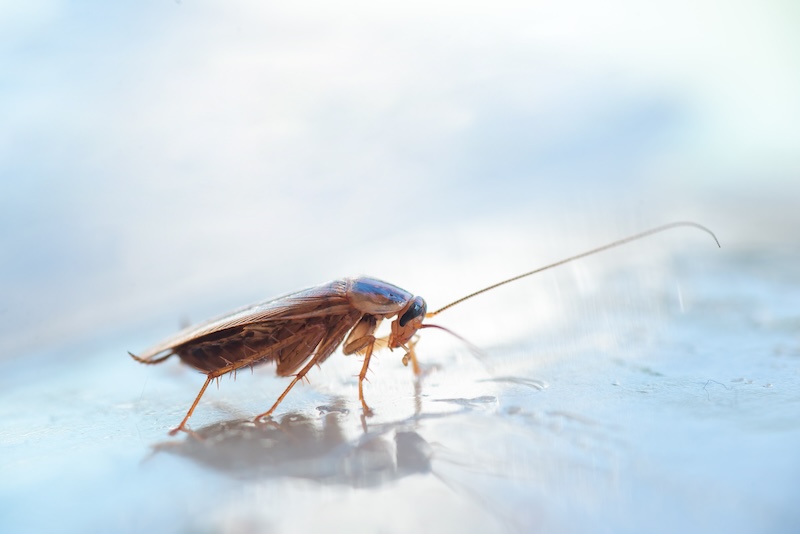Do Cockroaches Bite? Separating Fact from Fiction About These Household Pests
Understanding Cockroach Behavior and the Truth About Cockroach Bites
At Home Run Pest & Termite Control, we’ve heard nearly every pest question imaginable during our 15+ years of serving homeowners. One of the most common concerns we hear about cockroaches is whether these unwelcome visitors pose a biting risk to families. As your trusted local pest management experts, we’re committed to providing accurate, research-backed information that helps you understand pest behavior and make informed decisions about your home’s protection. Our professional technicians are trained to address even the most severe infestations with effective, family-friendly solutions that provide lasting relief from cockroach problems. When it comes to potentially harmful pests, we believe knowledge is your best defense.

Can Cockroaches Actually Bite Humans?
The short answer is yes – but it’s extremely rare. Cockroaches technically can bite humans, but the circumstances under which this might occur are very unusual. Despite what many people fear, cockroaches aren’t looking to bite people and don’t feed on human blood like mosquitoes or bed bugs.
Cockroaches have mouthparts designed for chewing soft materials. These omnivores typically prefer feeding on food scraps, plants, and other organic matter they find around your home. They’re naturally afraid of humans and do their best to avoid us, which is why they’re most active at night when we’re sleeping.
Bites from cockroaches generally only occur under two specific conditions:
- Severe infestations with food scarcity: When cockroach populations become overwhelming and food sources are limited, these desperate pests might nibble on unusual items, including human skin, fingernails, eyelashes, or calluses.
- Food residue on skin: Sometimes what appears to be a “bite” is actually a cockroach attempting to consume food residue, particularly on sleeping children who may have gone to bed with food on their faces or hands.
What Does a Cockroach Bite Look Like?
If you’ve been bitten by a cockroach (which, again, is extremely uncommon), the bite would likely appear as a small red bump similar to other insect bites. The affected area might be:
- Somewhat painful or itchy
- Slightly swollen
- Red and irritated
Since cockroach bites are so rare, what many people identify as “cockroach bites” are often actually:
- Bites from other household pests (like bed bugs, fleas, or mosquitoes)
- Skin reactions to cockroach allergens (their shed skins, droppings, and body parts can trigger allergic reactions)
- Unrelated skin conditions
The Real Health Risks of Cockroaches
While biting isn’t a significant concern with cockroaches, these pests do pose legitimate health risks to your household through other means:
Disease Transmission: As cockroaches crawl through garbage, sewage, and other unsanitary areas, they pick up bacteria and pathogens on their bodies and legs. When they later walk across your kitchen counters or food, they can transfer these contaminants, potentially spreading diseases like salmonellosis and E. coli.
Allergic Reactions: Cockroach allergens are a major trigger for asthma attacks and allergic reactions, especially in children. Their discarded skin, waste products, and even dead cockroaches can continue to cause allergic symptoms long after the living pests are gone.
Psychological Impact: Many people experience significant stress, anxiety, and sleep disturbances when dealing with cockroach infestations, which can affect overall wellbeing and quality of life.
Effective Prevention: Keeping Cockroaches Away From Your Home
Prevention is always the most effective approach to cockroach control. Here are practical steps you can take to make your home less attractive to these resilient pests:
Eliminate Food Sources:
- Store food in airtight containers
- Clean up crumbs and spills immediately
- Don’t leave pet food out overnight
- Take out trash regularly and use containers with tight-fitting lids
Reduce Moisture:
- Fix leaky pipes and faucets
- Address any areas of standing water
- Use dehumidifiers in damp basements
- Ensure proper ventilation in bathrooms and kitchens
Seal Entry Points:
- Caulk cracks and crevices around the foundation
- Weather-strip doors and windows
- Seal gaps around pipes and utility lines
- Screen vents and maintain window screens
Maintain Regular Cleaning:
- Vacuum frequently, especially in food preparation and eating areas
- Clean under appliances and furniture where crumbs may accumulate
- Reduce clutter where cockroaches can hide
- Keep garbage disposal areas clean and sanitized
When to Call Professional Pest Control
While preventive measures are essential, established cockroach infestations typically require professional intervention. Consider contacting us if:
- You’re seeing cockroaches during daylight hours (usually indicates a large infestation)
- DIY treatments haven’t been effective
- You’ve spotted egg cases or baby cockroaches
- You have family members with asthma or allergies that could be triggered by cockroach allergens
At Home Run Pest & Termite Control, our integrated pest management approach targets cockroaches at every life stage while minimizing chemical exposure for your family. Our technicians identify root causes of infestations, implement targeted treatments, and provide guidance on preventing future problems.
Don’t Let Cockroaches Take Over Your Home – Contact Home Run Pest & Termite Control Today!
While cockroach bites are extremely rare, the health risks from having these pests in your home are very real. Our experienced team provides fast, effective cockroach elimination with minimal disruption to your household.
Contact us today for a thorough inspection and customized treatment plan. Mention this blog post for a complimentary home protection assessment with your service!
